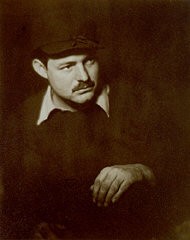You searched for: dapp理财分红项目快速搭建【TG���������@EK7676】平台包网搭建dapp理财分红项目快速搭建【TG���������@EK7676】平台包网搭建1dIh5Svrw7
<< Previous | Displaying results 81-90 of 652 for "dapp理财分红项目快速搭建【TG���������@EK7676】平台包网搭建dapp理财分红项目快速搭建【TG���������@EK7676】平台包网搭建1dIh5Svrw7" | Next >>
-
Gregor Wohlfahrt
ID CardGregor was the second of six children born to Catholic parents in a village in the part of Austria known as Carinthia. His father was a farmer and quarryman. Disillusioned with Catholicism, his parents became Jehovah's Witnesses and raised their children according to that religion. As a boy, Gregor loved mountain climbing and skiing. 1933-39: Gregor attended school and worked as a waiter. The situation for Jehovah's Witnesses worsened after Germany annexed Austria in March 1938; Witnesses refused to swear…
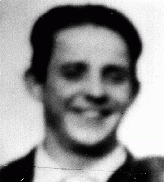
-
Permit for stay in Japan
DocumentJapanese authorities issued this "Permit for stay in Japan" to Ruth Segal (Rys Berkowicz). After several unsuccessful attempts to obtain visas for the United States, Ruth's father was able to secure a visa for her to go to New Zealand, in the British Commonwealth of Nations. [From the USHMM special exhibition Flight and Rescue.]
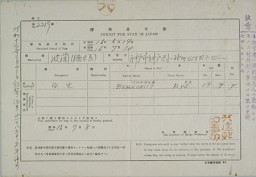
-
Census Card
DocumentOn December 17, 1941, the Romanian government issued a decree requiring a census of all those with “Jewish blood.” All persons having one or two Jewish parents or two Jewish grandparents were ordered to register at the Central Jewish Office. This is a census certificate issued by that office in 1942.
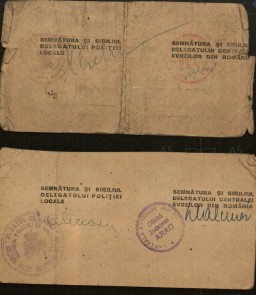
-
Auschwitz - ID Card/Oral History
Media EssayThe Auschwiz camp complex was the largest of its kind established by the Nazi regime. Auschwitz consisted of three main camps, including a killing center. More than 1.1 million people were murdered at Auschwitz. Individuals not sent directly to th...
-
Evidence Tag
ArtifactEvidence tag from the trial of Klaus Barbie in Lyon, France. This standard police form lists Barbie's infractions as crimes against humanity and complicity, concepts defined at the International Military Tribunal at Nuremberg decades earlier. The line in which the victims' names would be recorded is left blank. February 25, 1983.

-
Liberation of Bergen-Belsen
FilmAfter British soldiers liberated the Bergen-Belsen concentration camp in Germany, they forced the remaining SS guards to help bury the dead. Here, survivors of the camp taunt their former tormentors, who prepare to bury victims in a mass grave.
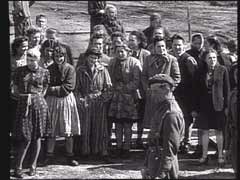
-
Liberation of Mauthausen
FilmThe Mauthausen concentration camp was established shortly after the German annexation of Austria (1938). Prisoners in the camp were forced to perform crushing labor in a nearby stone quarry and, later, to construct subterranean tunnels for rocket assembly factories. US forces liberated the camp in May 1945. In this footage, starving survivors of the Mauthausen concentration camp eat soup and scramble for potatoes.
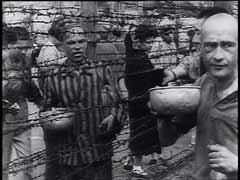
-
Conditions in the Warsaw ghetto
FilmThe Nazis sealed the Warsaw ghetto in mid-November 1940. German-induced overcrowding and food shortages led to an extremely high mortality rate in the ghetto. Almost 30 percent of the population of Warsaw was packed into 2.4 percent of the city's area. The Germans set a food ration for Jews at just 181 calories a day. By August 1941, more than 5,000 people a month succumbed to starvation and disease.
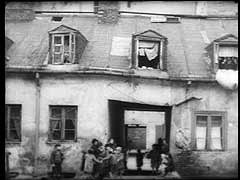
-
Defendant Julius Streicher
PhotoDefendant Julius Streicher in his prison cell at Nuremberg. For his influential role in inciting hatred and violence, the International Military Tribunal at Nuremberg indicated Streicher on count four, crimes against humanity. Streicher was found guilty and sentenced to death. He was hanged on October 16, 1946.

-
Ernest Hemingway
PhotoPortrait of Ernest Hemingway by Helen Pierce Breaker. Paris, France, ca. 1928. In 1933, Nazi students at more than 30 German universities pillaged libraries in search of books they considered to be "un-German." Among the literary and political writings they threw into the flames were the works of Ernest Hemingway.
